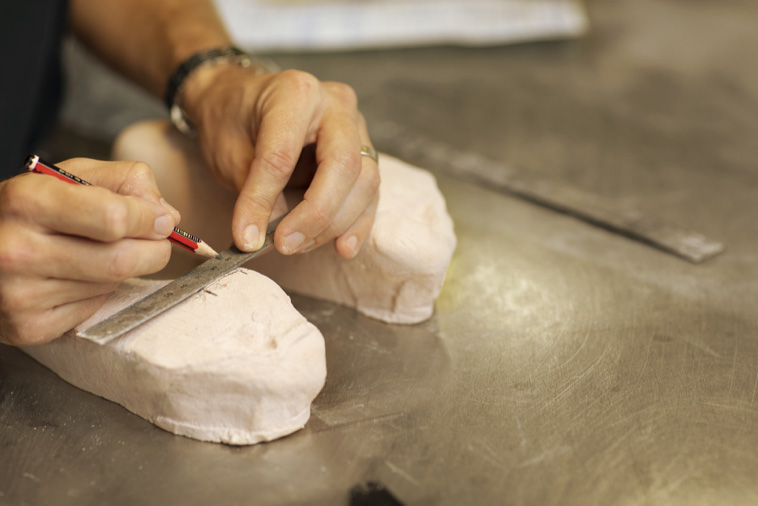Is Your Orthotic Lab Giving You Custom Orthotics?
In a day and age where the customisation of orthotics is being called into question by health funds, the podiatry profession and the wider public, it’s increasingly important for the treating podiatrist to know exactly what is going on at their lab. Specifically, when you open up the packet with the patient’s orthotics inside, how do you know they have been custom made from the impression you took some 2-3 weeks earlier? If you get audited by a health fund, can you demonstrate that you have truly prescribed a custom orthotic? There are a few simple ways of knowing your patient’s devices are bespoke.
Is Your Lab Open to You Visiting?
Taking a day or even just a few hours out of your practice may be costly, but the value in spending that time at your lab is worth its weight in gold. It gives you the ability to see exactly what happens and the processes that your lab follows. You should be able to track your impression right the way through the facility to the end product. It’s also a great opportunity to troubleshoot any specific issues you may be having.
Does Your Lab Use Blanks/Library Devices?
The old saying that time is money is especially relevant in manufacturing. To save time, many CAD programs have the ability to use blanks or library devices. By taking measurements (lengths, widths, arch height etc), the software can superimpose the blank over the impression, thereby skipping many important steps to model a custom device. Note many labs are up front and sell their library devices separate from their custom devices at a lower price point which is the honest and transparent way. This enables podiatrists to service their patients if they don’t have the need for custom devices or are unable to afford them. However, there have been circumstances where podiatrists have unknowingly received library devices from their lab, thinking they were receiving custom devices.
Are All of Your Orthotics Symmetrical?
Following on from the point above, some labs make all of their devices to look symmetrical in an attempt to be more aesthetically pleasing. But does this reflect the morphology of the patient? If the patient has asymmetrical feet, why should the orthotics look symmetrical? How has that symmetry been achieved? Most CAD software has the ability to mirror. Thus, the lab can model one foot and simply mirror or flip to the other side, thereby saving time. But is this true customisation, or is it only 50% customised?

What Does the Lab Report Back to You?
To achieve true customisation of both feet, an assessment of the scans or casts must be performed prior to any modelling or plaster additions. That way, the lab can determine if one foot is longer, has differences in medial and lateral longitudinal arch heights, differences in widths at the heel, midfoot or forefoot, the forefoot to rearfoot relationship and any other osseous anomalies (e.g. prominent styloid process or navicular tuberosity) or soft tissue irregularities (e.g. plantar fibromas) which needs to be accommodated for. These should be reported back to the treating podiatrist so there’s complete transparency and understanding as to why the orthotic devices look the way they do. It also ensures the lab staff are manufacturing the device true to the patient’s anatomy. It’s not uncommon to see lab sheets being sent back to the podiatrist with notes such as left foot longer, left MLA lower, left midfoot wider as well as the forefoot to rearfoot relationship. Using this example, if we didn’t take the patient’s asymmetrical anatomy into consideration and just made symmetrical devices, we’d be making the right side unnecessarily lower, wider and longer or the left side unnecessarily higher, narrower and shorter. Both situations are likely to cause fit/tolerance issues.
How Accessible is Your Lab to Discuss your Orthotic Prescription?
Whilst some may see an orthotic lab as just being another supplier to a podiatry clinic, I believe the relationship between clinician and lab is an important relationship in helping to give the best patient outcomes. Clinicians must be able to call their lab (and vice versa) to discuss orthotic prescription parameters to optimise patient outcomes. That relationship between clinician and lab will develop over time where you get to know how each other works.
In summary there are several ways to critically evaluate your orthotics to determine the level of customisation that has gone into their production. It’s important to know exactly what you’re getting and how your lab operates to ensure you optimise patient outcomes.
